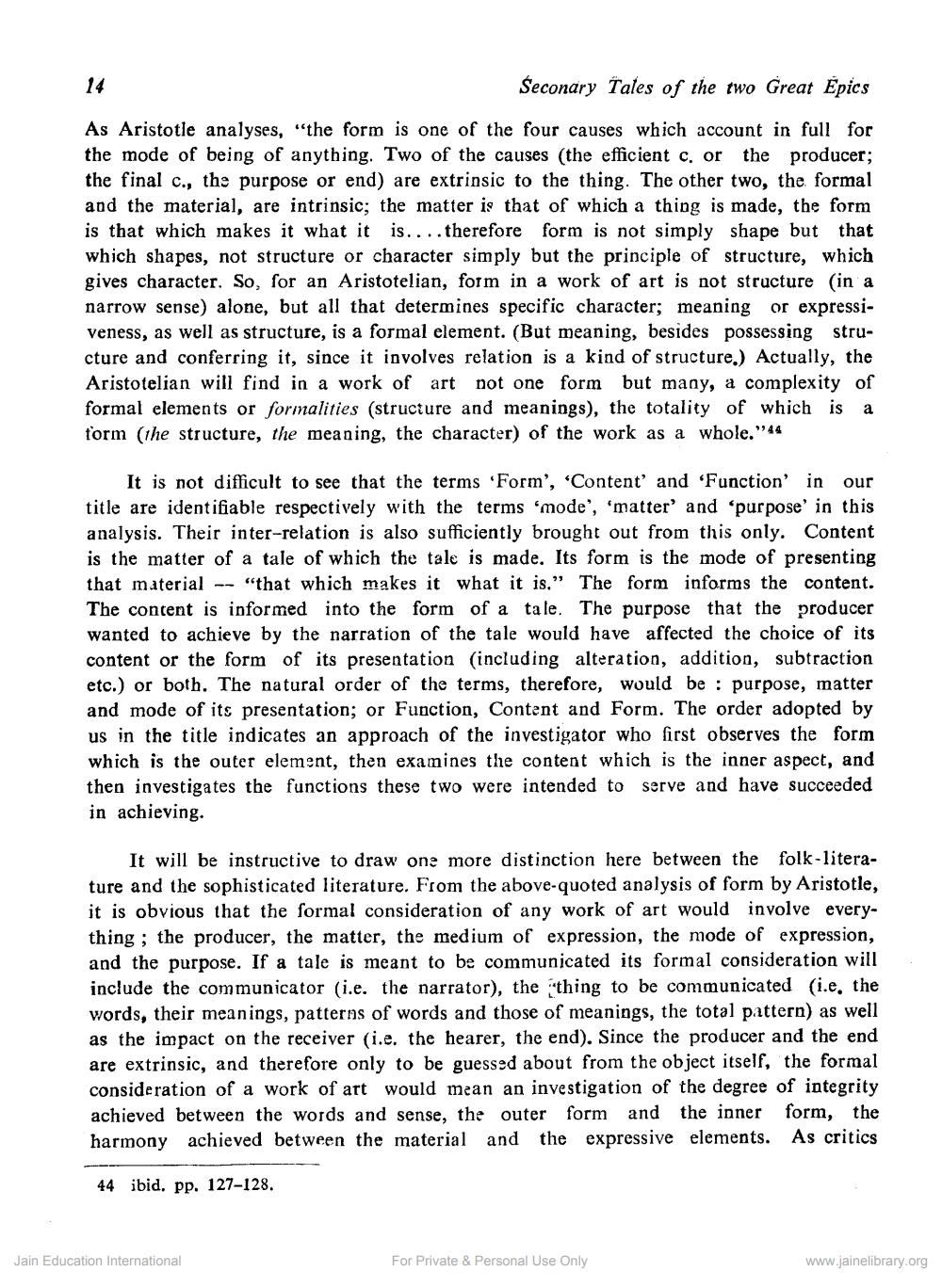________________
Seconary Tales of the two Great Épics
As Aristotle analyses, "the form is one of the four causes which account in full for the mode of being of anything. Two of the causes (the efficient c. or the producer; the final c., the purpose or end) are extrinsic to the thing. The other two, the formal and the material, are intrinsic; the matter is that of which a thing is made, the form is that which makes it what it is....therefore form is not simply shape but that which shapes, not structure or character simply but the principle of structure, which gives character. So, for an Aristotelian, form in a work of art is not structure in a narrow sense) alone, but all that determines specific character; meaning or expressiveness, as well as structure, is a formal element. (But meaning, besides possessing structure and conferring it, since it involves relation is a kind of structure.) Actually, the Aristotelian will find in a work of art not one form but many, a complexity of formal elements or formalities (structure and meanings), the totality of which is a form (the structure, the meaning, the character) of the work as a whole."'44
It is not difficult to see that the terms 'Form', 'Content' and 'Function' in our title are identifiable respectively with the terms 'mode', 'matter' and 'purpose' in this analysis. Their inter-relation is also sufficiently brought out from this only. Content is the matter of a tale of which the tale is made. Its form is the mode of presenting that material -- "that which makes it what it is." The form informs the content. The content is informed into the form of a tale. The purpose that the producer wanted to achieve by the narration of the tale would have affected the choice of its content or the form of its presentation (including alteration, addition, subtraction etc.) or both. The natural order of the terms, therefore, would be : purpose, matter and mode of its presentation; or Function, Content and Form. The order adopted by us in the title indicates an approach of the investigator who first observes the form which is the outer element, then examines the content which is the inner aspect, and then investigates the functions these two were intended to serve and have succeeded in achieving.
It will be instructive to draw one more distinction here between the folk-literature and the sophisticated literature. From the above-quoted analysis of form by Aristotle, it is obvious that the formal consideration of any work of art would involve everything; the producer, the matter, the medium of expression, the mode of expression, and the purpose. If a tale is meant to be communicated its formal consideration will include the communicator (i.e. the narrator), the thing to be communicated (i.e, the words, their meanings, patterns of words and those of meanings, the total pattern) as well as the impact on the receiver (i.e. the hearer, the end). Since the producer and the end are extrinsic, and therefore only to be guessed about from the object itself, the formal consideration of a work of art would mean an investigation of the degree of integrity achieved between the words and sense, the outer form and the inner form, the harmony achieved between the material and the expressive elements. As critics
44 ibid. pp. 127-128.
Jain Education International
For Private & Personal Use Only
www.jainelibrary.org




